First appearing in the late sixties in the songs of bands like Cream and the Jimi Hendrix Experience, the wah wah pedal was instantly recognized as another new effect that had altered the way the guitar could be played. This was something of a re-occurring theme throughout that decade. Advancements made in guitar building in the fifties led to a jump in the technical abilities of guitarists themselves a few years later, mainly in the rock arena, and then a corresponding jump in amplification technology as those same guitarists strove to make their sound louder, faster, and above all, heavier. Engineers worked to meet these demands, and happy accidents like the wah wah pedal were byproducts of a true age of invention in the world of guitar playing.
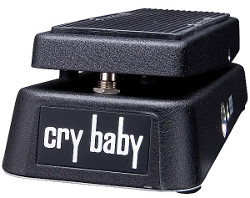
How it’s used
The wah wah pedal is a modulation device that boosts the guitar signals as the pedal is moved forward and back between a trebly, thin tone when the pedal is set at the forward position, and a bassier, lower sound when it is set back. The wah wah allows you to slide between these two extremes gradually, as it’s moved forward and back. This can either be done slowly, for expressive, soulful playing, or more rapidly for hard rock/metal style solos, and also for the famous “whacka whacka” funk rhythm sound that brings images of 1970s cop shows (and other things) instantly to mind. The onomatopoeic “wah” name comes from the sound achieved when a note is bent and the pedal is pushed forward to match it; the resulting squawk gives a sharp “waaaaahhhh” sound that many people liken to a human voice.
History of the pedal
The wah was a happy accident that came about when engineers at Warwick Electronics Inc./Thomas Organ Company were working to convert the Vox amplifier from a device using old style tubes to more modern (and cheaper) transistor state in 1966. Transistors were lighter and easier to produce and maintain than tubes, and although purists will claim that tube amps have a warmer sound, the conversion was really a sign of the times. The Warwick/Thomas Company had bought Vox a couple of years earlier after the massive success of the Beatles in the United States. The Beatles had arrived with their Gretsch and Rickenbacker guitars, plus Paul McCartney’s Hofner bass, plugged into Vox amps, and the resulting exposure (their first T.V. appearance was the most watched event in the American history) had made Vox a hot property.
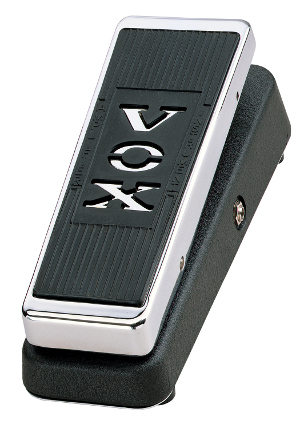
Engineer Brad J. Plunkett was testing different transistor configurations when two of his colleagues, Bill Page and Dell Casher, noticed an odd effect that he had produced with one such experiment. Page plugged in a saxophone and began playing with the sound, before they called for a Vox volume pedal, the casing of which they placed Plunkett’s circuitry into. The volume pedal’s back and forth motion allowed them to modify the sound as they played. Casher then tried the effect with an electric guitar. A difference of opinion between the men emerged over whether the new effect should primarily be marketed toward the wind instrument market or the guitar market. Eventually, the product would be marketed first toward the wind instrument market, with a picture of trumpeter Clyde McCoy, although this was later changed to simply a signature. Almost immediately however, Vox configured a new version aimed at the electric guitar market, and the Vox Crybaby was released. It seems that the company was slow in copywriting the “Crybaby” moniker, and a torrent of copycat versions were the result. The company most widely associated with the name today is Jim Dunlop.
The new effects pedal wasn’t long in gaining popularity as guitarists discovered the effect it could have on their sound. From the late sixties and into the seventies the wah became a staple of popular culture, its sound being utilized on countless albums and soundtracks.
Where it’s positioned
The vast majority of noted guitarists have placed the wah wah pedal in the first position of the effects chain with the guitar going straight into it. A few others though, like Brian May of Queen and Carlos Santana, have placed pedals before them. One novel way to solve the problem would be to follow Steve Vai’s example and use two wah pedals in your effects chain if your budget stretches that far! Experiment with what works for you, and try placing your pedals in different configurations to see which combination is best for you.
Brands, models, and where to buy
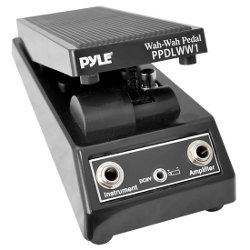
The two most popular brands today by far are Vox and Jim Dunlop. The Dunlop Original Crybaby is the biggest selling wah pedal on Amazon and currently retails for about seventy dollars. The Vox V847A is slightly cheaper at fifty. Dunlop offers a couple of variations on its original also. The Slash signature wah is terrifically popular and gained five star reviews on its release from most guitar magazines and review sites. There’s also the more expensive Dunlop 535Q Multi Wah, which offers a wider variety of tones and sounds than the original.
If money is tight, there is the Pyle-Pro PPDLWW1, retailing in at around twenty dollars. Reviews for this pedal have been mixed, however, so make sure to try before you buy. This is to be advised for all guitar products, so visit your local music store to see what they have available before buying online also. Taking five minutes to try out the sound of a pedal before buying can save the hassle of buying online only to find that the product is not what you imagined.
Top five wah wah guitar moments
If you were wondering exactly what the wah sounds like, well here it is. Enjoy. –Dave
- Theme From Shaft (Isaac Hayes): The sound of the seventies in four and a half minutes. The palm muted “whacka whacka” of the wah was central to the success of Isaac Hayes seminal soundtrack accompanying the movie about the private investigator that no one could understand except his woman.
- Strange Brew (Cream): Eric Clapton and Jack Bruce, along with Ginger Baker on drums, cook up a heady mix of psychedelic blues here with Clapton’s wah wah lead lines punctuating the sound like a whip. Notice here how the wah updates what is otherwise a standard blues pattern.
- Voodoo Child (Slight Return) (Jimi Hendrix): No discussion of the wah pedal can ever be complete without mentioning Jimi Hendrix. The wah was central to the sound of the player who changed guitar playing forever. It was Hendrix, more than anyone before, who showed what an electric guitar was capable of. On Voodoo Child (Slight Return) the wah is pushed to the forefront in what is probably his greatest guitar moment.
- Money For Nothing (Dire Straits): Taking the wah into the eighties, Dire Straits were the sound of MTV back when it actually played music. A paean to the “what might have been” conversations that we’ve all had or heard at some time, after a slow build up, lead guitarist Mark Knopfler unleashes a devastating fingerpicked riff on his Les Paul that you can’t help but turn up to eleven. Central to the distorted squall of Knopfler’s sound is a wah set to the “sweet spot” central position.
- Enter Sandman (Metallica): A true guitar classic, its clean opening riff leading to the crushing main figure, pierced throughout with Kirk Hammett’s incendiary lead lines. Metallica may have been changing their sound on the “Black” album, but they were continuing a fine tradition of using the wah to flatten all opposition.
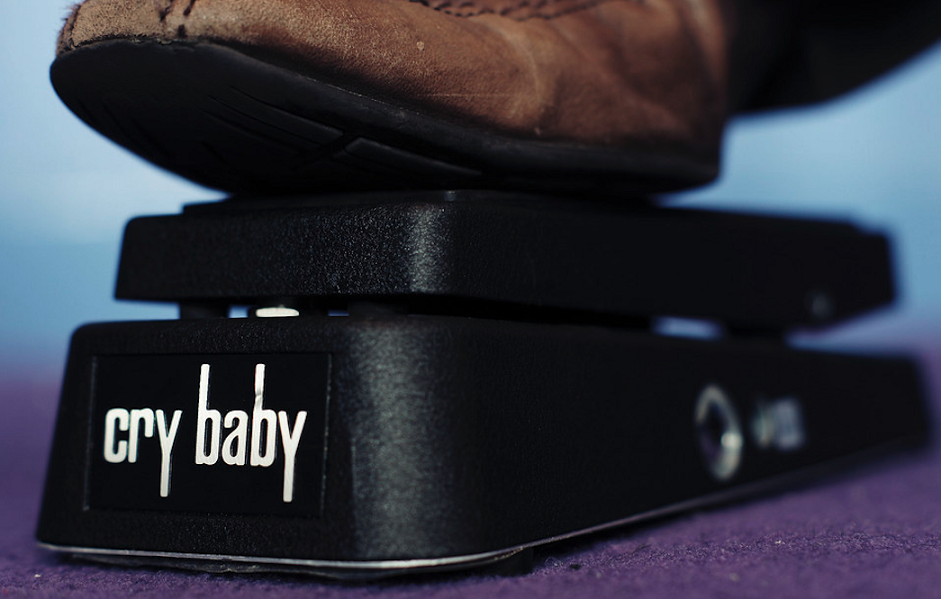
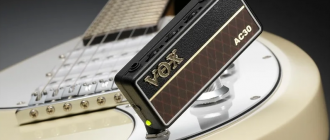
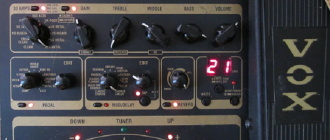
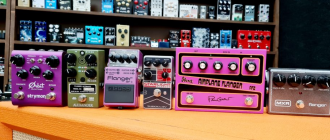
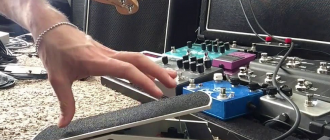



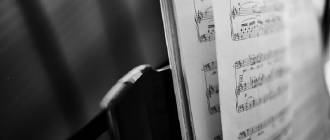
Actually I was the guitarist consulting for Vox that discovered that the modified MRB switch from Vox UK had been modified in the Vox US amps using a rotary pot to save money. While rehearsing with Bill Page’s Vox Ampliphoinic Orchestra I found my guitar created the wah sound by rotating the pot on the amp. I went to head of Thomas Organ engineering Stan Cutler and asked that he put me in touch with the engineer who made the conversion. Stan Cutler contacted Brad Plunkett but DID NOT tell Brad that Del Casher requested to have that circuit lifted and put into a Vox Volume casing. After getting the pedal from Brad I further modified it by making a smoother sound and produced the first recording for Vox and my original songs using the first wah pedal to demonstrate to the world a a wah wah pedal is. I was the first person to record using my Vox wah pedal on film scores in Feb 1967 at Universal Pictures. Everyone else including Hendrix came much later in 1967. I have proof with photos and correspondence for all these stated facts. Brad Plunkett was wrongly awarded inventor of the wah pedal but in fact he was not the inventor even though he was paid $ 50 as an employee of Thomas Organ. Plunkett never came up with a true explanation on how the wah pedal was created because although he designed the solid state circuit for the Vox amp he had no idea that I was the one who requested Stan Cutler to get me the guy to place that amp circuit into a pedal because I heard the future by simply turning a knob on an amplifier